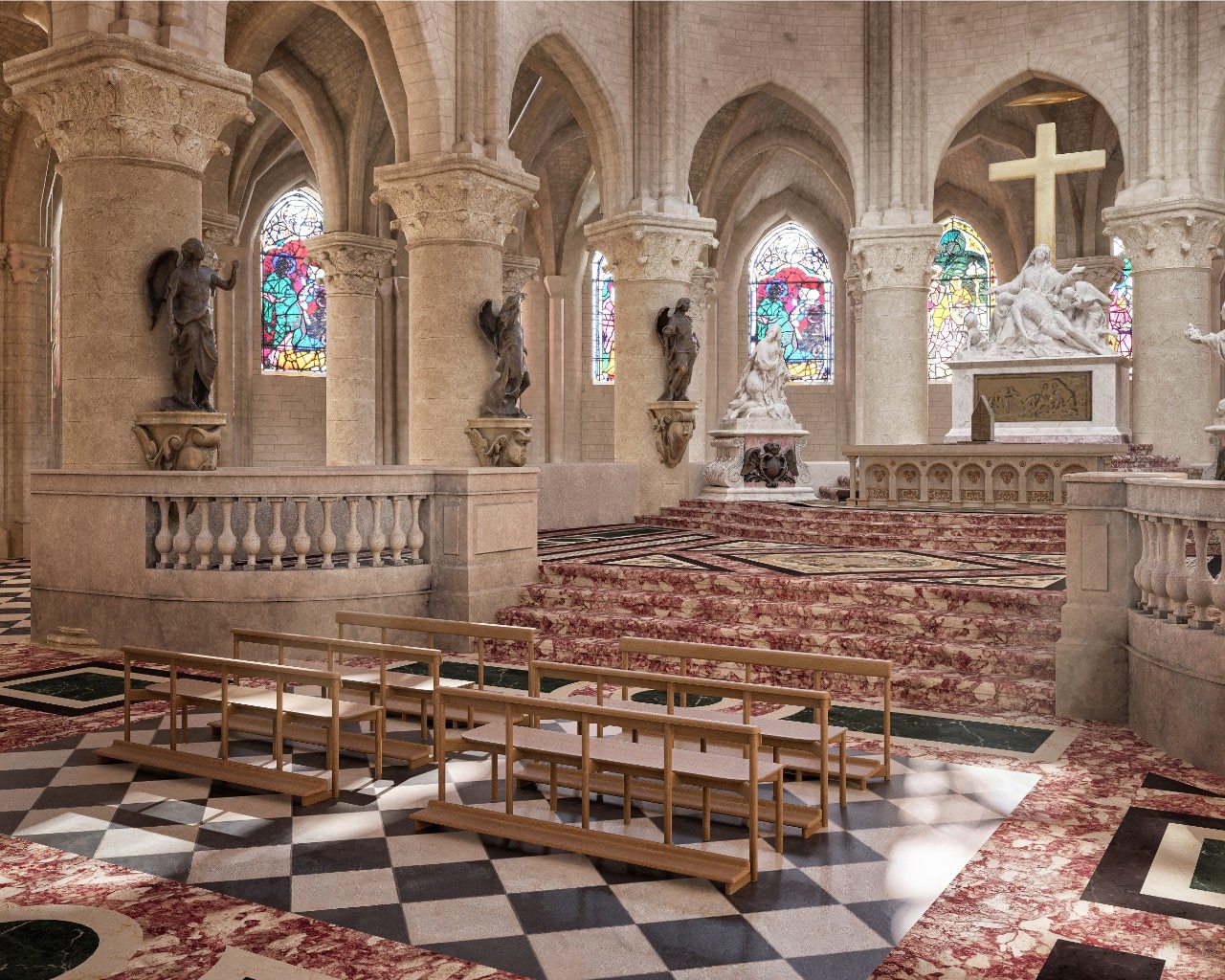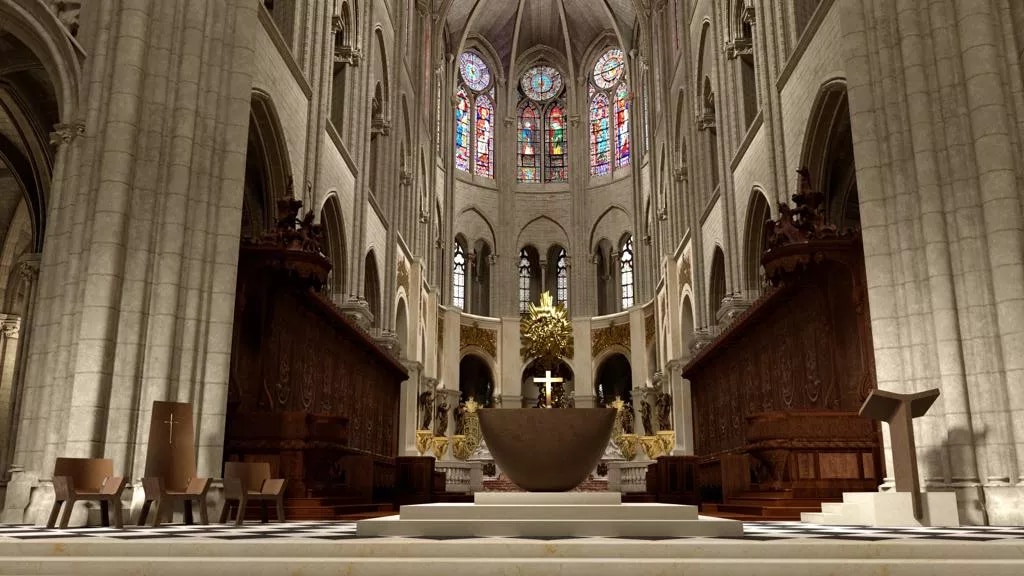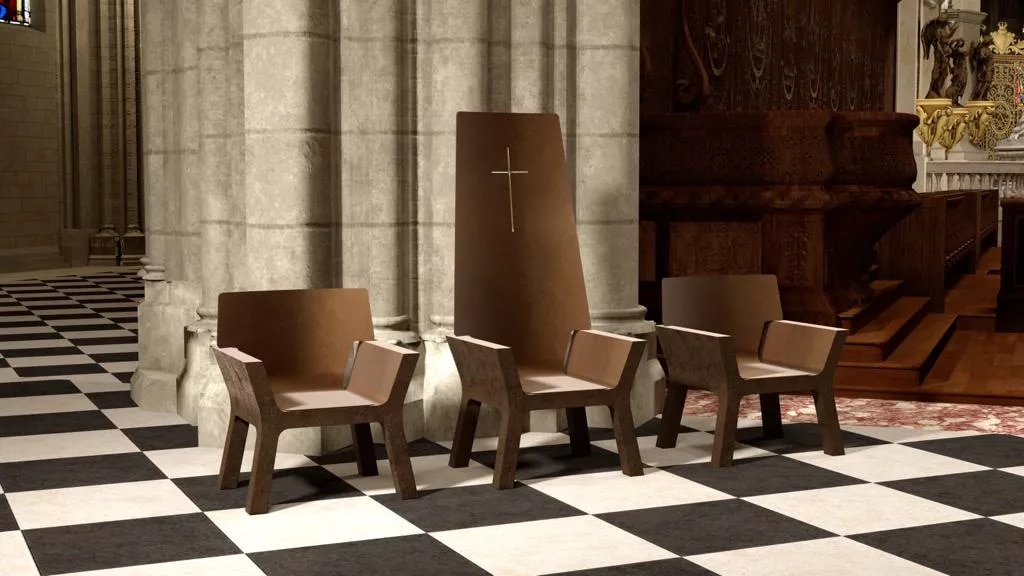At 7 p.m. on April 15, 2019, the roof of Notre Dame Cathedral—a jewel of 12th-century Gothic architecture and one of the most visited churches in the world—succumbed to flames. Firefighters battled the blaze throughout the night, bringing the structure to the brink of collapse. As the French looked on, stunned by the destruction of a symbol of their national history, the initial damage assessment was devastating: the spire by Eugène Viollet-le-Duc, under restoration at the time, had collapsed, and the "forest"—an oak beam structure supporting the roof for over 800 years—had burned to ashes, taking part of the vault above the transept with it. The church, filled with debris, was exposed to the elements, and the entire structure needed stabilization.
Faced with such a severe shock, reconstruction became a national priority and symbol of resilience. The project was launched swiftly, bolstered by generous contributions from private donors worldwide, with a restoration budget currently estimated at €700 million. In the initial phase, lasting until summer 2021, the primary goals were to secure the structure, preserve artworks, and clean up lead dust—used in the roof and spire in the Middle Ages—that had dispersed during the fire.
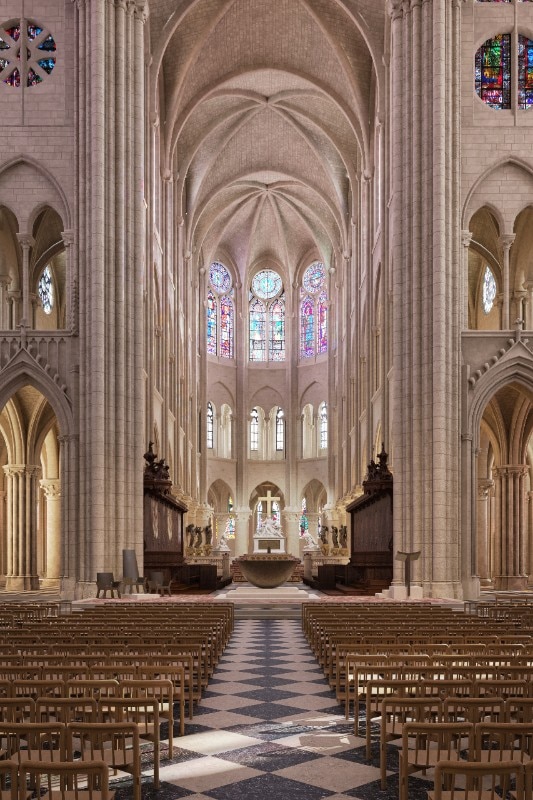
Meanwhile, debates flared over how to rebuild such a historic monument. Should a contemporary redesign reflect the passage of time and the layers of history inevitably added to architecture? Architects and designers worldwide proposed imaginative, often outlandish ideas. However, French President Emmanuel Macron ended the speculation: Notre Dame would be rebuilt exactly as it was, including Viollet-le-Duc's 19th-century spire. Even concerns over using lead were set aside after a 2021 report from the High Council for Public Health found no health risks, clearing the way for its reuse.
By autumn 2021, reconstruction began in earnest. Every stone was examined, stabilized, or replaced as necessary. The collapsed vaults were meticulously rebuilt, and the "forest" was restored using oaks from across France—a symbolic gesture of national unity. The beams were cut with medieval techniques, using hand axes. Meanwhile, artisans across the country worked on stained glass, statues, gargoyles, and even the organ, which had miraculously survived the fire. In keeping with an integrative restoration approach, irreparable elements were replaced with replicas crafted by master artisans. A total of 2,500 craftspeople worked on the project.
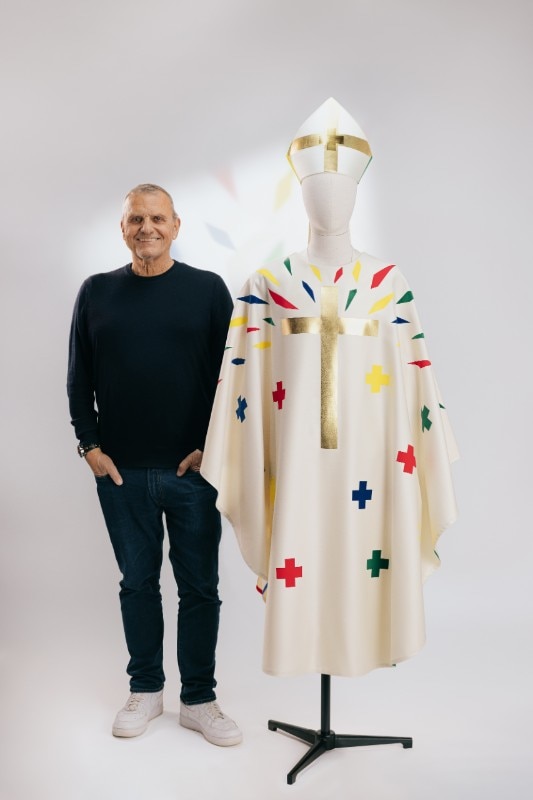
On December 7, 2024, just over five years after the fire, Notre Dame will officially reopen with a ceremony led by the Archbishop of Paris and attended by numerous heads of state and patrons. The next day, the cathedral will welcome its faithful again. Thanks to cleaning and restoration, the church now gleams with newfound brightness. Inside, vivid colors of paint and stained glass stand out against the light stone, evoking the awe felt by medieval pilgrims passing through its Portal of Judgment.
Yet, amidst this faithful reconstruction, a few contemporary updates emerge. Notably, changes to the sacred furnishings reflect a departure from tradition. Jean-Charles de Castelbajac, a renowned French artist known for blending fashion and design, created a line of graphic, striking liturgical garments. Inspired by the interplay of light in the cathedral, Castelbajac said, "The brilliance of light and color on Notre Dame’s golden stone guided my creative process." His work features bold colors and gold accents, echoing the stained glass, and was produced by prestigious ateliers specializing in embroidery, metallurgy, and handcrafting.
His work features bold colors and gold accents, echoing the stained glass, and was produced by prestigious ateliers specializing in embroidery, metallurgy, and handcrafting.
Con la complicità della Diocesi di Parigi, Jean-Charles de Castelbajac, celebre artista francese abituato a far convivere il mondo della moda con quello del design, ha progettato una linea di abiti liturgici grafica ed incisiva, basata sulla restituzione astratta dell’esperienza della luce nella cattedrale. “La luce e il suo splendore hanno guidato il mio gesto creativo, ho pensato alla brillantezza del colore sulla risorgente pietra bionda di Notre-Dame. Il mio lavoro è legato al ritmo cromatico e alla forza dell'oro. Facendo eco alle vetrate colorate, il colore è onnipresente sulle pianete bianche, attorno alla croce dorata”. Abiti e accessori sono stati prodotti da cinque maison d’art specializzate nella confezione, nel ricamo a mano e nella metallurgia: Lesage, Goossens, Paloma, Atelier Montex e Maison Michel, tutti residenti sotto il tetto di 19M, il quartier generale di Chanel dedicato ai mestieri d’arte.
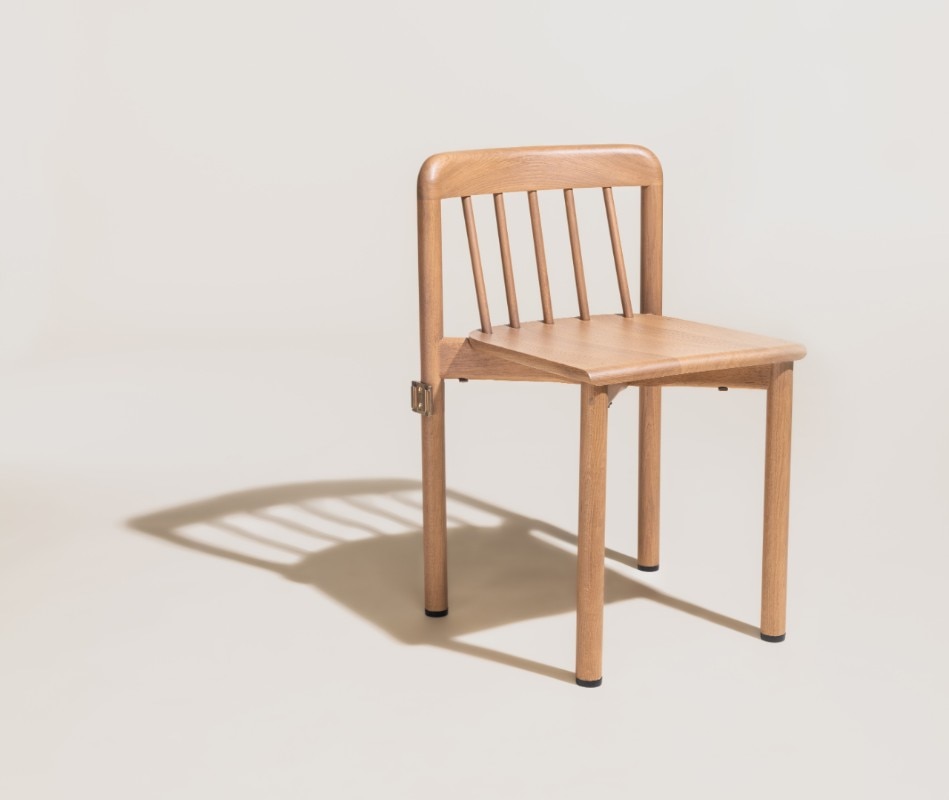
The 1,500 chairs for the central nave, designed by Ionna Vautrin and made by the family-run Bosc carpentry workshop, reflect "noble simplicity." According to Vautrin, the chairs’ transparency and height complement the cathedral’s vertical grandeur while inviting devotion. Stackable and connectable with brass joints, the chairs were designed for versatility, accommodating prayer, concerts, or meditation.
The chairs’ transparency and height complement the cathedral’s vertical grandeur while inviting devotion.
Another designer, Guillaume Bardet, created the liturgical furnishings, including the altar, lectern, and tabernacle. Bardet opted for timeless simplicity, using bronze for its subtle yet expressive qualities. Additional updates, including new stained glass windows to replace Viollet-le-Duc’s designs, may be announced during the reopening. Eight artists, including Jean-Michel Alberola and Daniel Buren, are finalists in the design competition. However, France's National Commission for Heritage and Architecture has expressed opposition to replacing the historic windows.
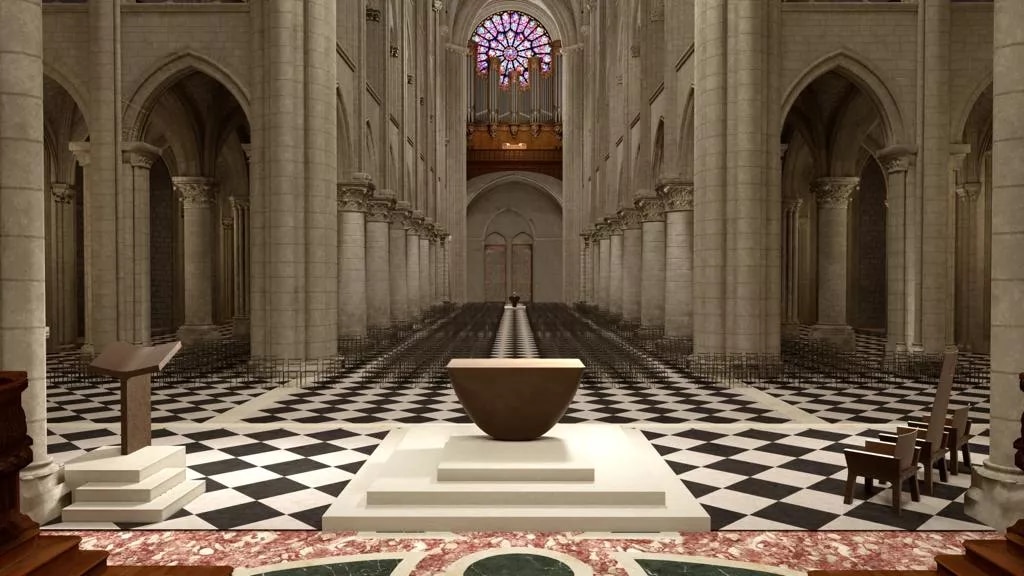
On the safety front, a new fire prevention system includes sensors, fire-resistant shutters, and water misting to extinguish flames at the first signs of danger. The cause of the 2019 fire remains undetermined. Notre Dame’s reopening, a blend of reverent restoration and subtle innovation, marks a triumphant return of one of the world’s most beloved landmarks.
Opening image: Photo Arnaud Sabatier


